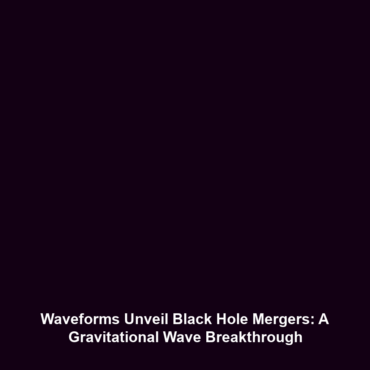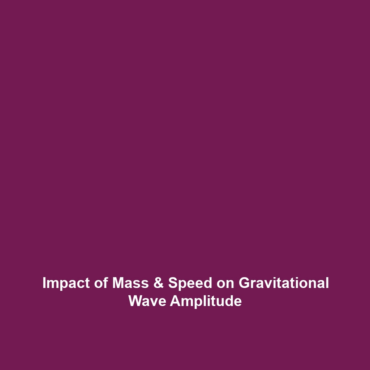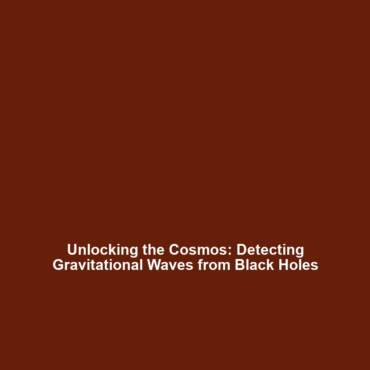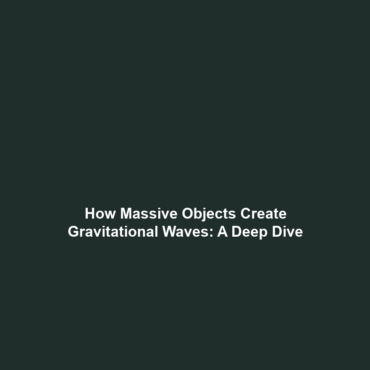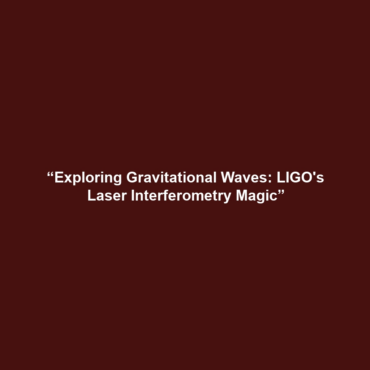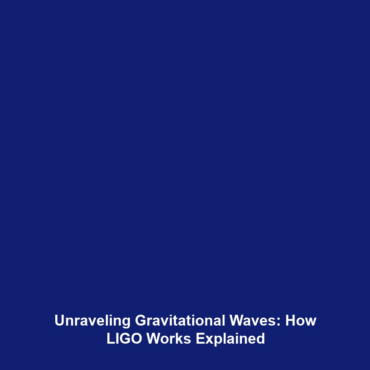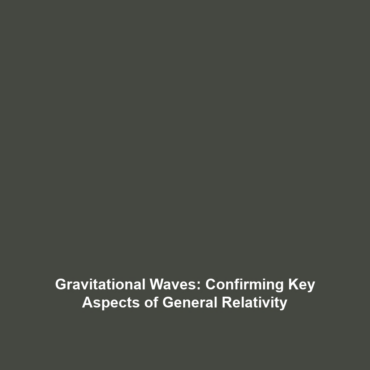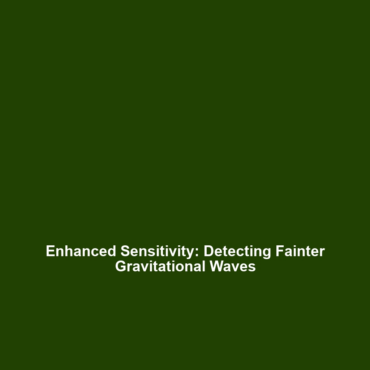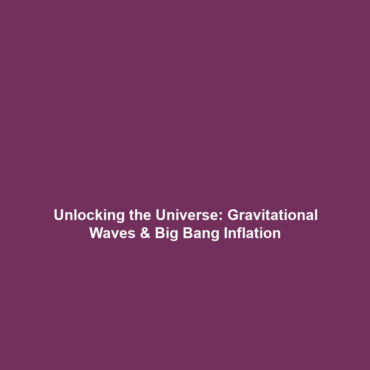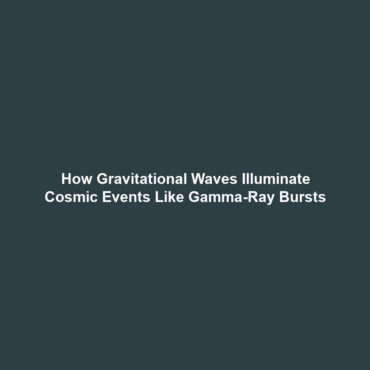How Waveforms Allow Scientists to “See” Black Hole Mergers in Action
Introduction
Gravitational waves, ripples in spacetime caused by cosmic events, have revolutionized our understanding of the universe. Among these events, black hole mergers stand out as some of the most dramatic occurrences in the cosmos. Scientists utilize waveforms—specific patterns of gravitational waves—to see these mergers in action, offering unprecedented insights into black hole behavior and the fabric of spacetime. This article delves into how waveforms function, their significance in gravitational wave research, and the broader implications for astrophysics.
Key Concepts
Understanding Gravitational Waves
Gravitational waves are produced when massive objects, such as black holes, accelerate in spacetime. The study of these waves allows scientists to infer the presence of black holes, even when they are invisible through traditional telescopes. Waveforms represent the shape and frequency of the emitted gravitational waves, which carry critical information about the events that created them.
Waveform Distinction
Each black hole merger generates a distinct waveform. By analyzing these patterns, researchers can estimate various parameters, including the masses, spins, and distance of the merging black holes. Waveforms serve as a vital link between theoretical models and observational data, enabling scientists to validate predictions about black hole behavior.
Applications and Real-World Uses
The ability to see black hole mergers through waveforms has several significant applications:
- Astrophysics Research: Waveforms provide critical data for researchers studying black holes, allowing for enhanced understanding of their formation and collisions.
- Testing General Relativity: Observations of gravitational waveforms enable scientists to test the limits of Einstein’s theory, seeking answers to foundational questions in physics.
- Cosmology: Applications of waveform analysis extend to cosmology, contributing to the study of the universe’s expansion and the distribution of dark matter.
Current Challenges
While the study of gravitational waves through waveforms is promising, several challenges exist:
- Signal Noise: Distinguishing gravitational signals from background noise remains a challenge, complicating data analysis.
- Limited Detection Range: Current gravitational wave detectors have limitations in range and sensitivity, which can exclude distant mergers.
- Complex Models: Creating accurate models of waveforms requires substantial computational resources and theoretical frameworks.
Future Research and Innovations
The future of gravitational wave detection and waveform analysis is bright, with several key innovations on the horizon:
- Advanced Detectors: Next-generation detectors like the Einstein Telescope and Cosmic Explorer aim to enhance sensitivity and expand the detectable universe.
- Machine Learning: Utilizing AI and machine learning techniques may improve the extraction of signals from noise and revolutionize data analysis.
- Multi-messenger Astronomy: Combining gravitational wave data with electromagnetic observations may unlock new insights into cosmic events.
Conclusion
Waveforms play an essential role in enabling scientists to observe black hole mergers and understand deep cosmic phenomena associated with gravitational waves. As research progresses and new technologies emerge, the potential to uncover the mysteries of the universe continues to grow. To stay updated on advancements in gravitational wave science, delve into our other articles on astrophysics and cosmology.
